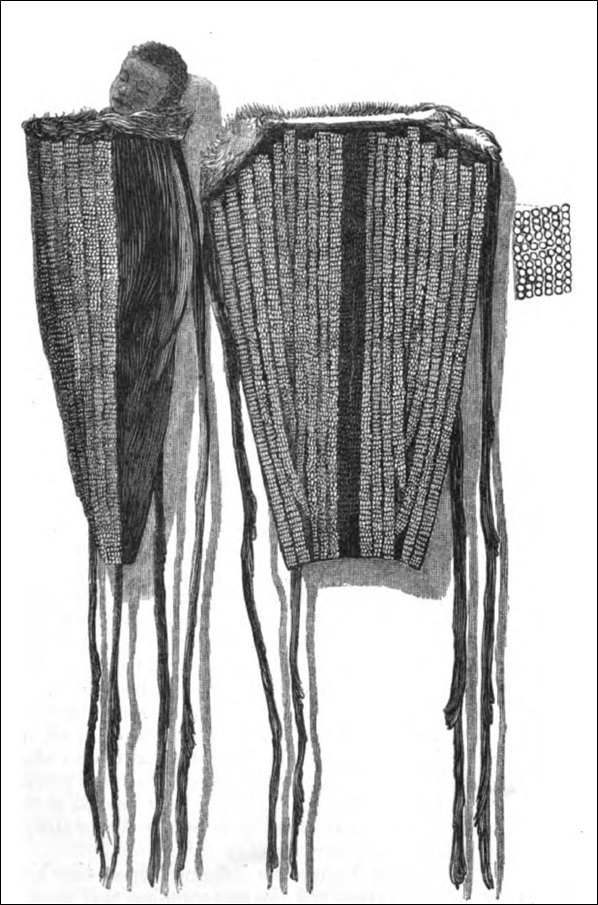
Image Title:
Cradle
Note:
The elaborate cradle of a child of a chief: “It is nearly two feet in length by one in width, and is made of antelope skin, with the hair still remaining. The first care of the maker has been to construct a bag narrow towards the bottom, gradually widening until within a few inches of the opening, when it again contracts. This form very effectually prevents an active or restless child from falling out of its cradle. The hairy side of the skin is turned inwards, so that the little one has a soft and pleasant cradle in which to repose. In order to give it this shape two “gores” have been let into the back of the cradle, and are sewn with that marvelous neatness which characterizes the workmanship of the Kaffir tribes. Four long strips of the same skin are attached to the opening of the cradle, and by means of them the mother can bind her little one securely on her back. [Wood, p.9]
The entire front of the cradle is covered with beads, arranged in regular rows. In this specimen, two colors only are used; namely, black and white. The black beads are polished glass, while the others are of the color which are known as “chalk-white,” and which is in great favor with the Kaffirs, on account of the contrast which it affords to their dusky skin. The two central rows are black. The cradle weights rather more than two pounds, half of which is certainly due to the profusion of beads with which it is covered. On the right hand of the cradle a small portion is drawn on an enlarge scale, in order to show the manner in which the beads are arranged." [Wood, p.10]
Image Source:
Wood, J. G. 1868.Natural History of Man; Being an Account of the Manners & Customs of the Uncivilized Races of Men; Africa. London: Routledge& Southard, p.9. Book at Google
Subject:
Baby - Mother - Babywearing - Baby Sling - Bead Work
Date:
1868
Rights:
Public Domain
Image:
SA-MBBY-9
Use this Image:
If you are interested in using this image, please consult
Acknowledging the Website’s Conditions of Use and Bibliographic Sources
